The figure shows an overhead view of a meter stick that can pivot about the dot at the position marked 20 (for 20 cm). All five forces on the stick are horizontal and have the same magnitude. Rank the forces according to the magnitude of the torque they produce, greatest first.
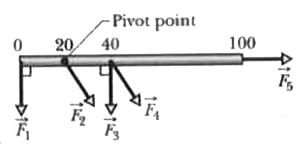
1 and 3 tie, then 4, then 2 and 5 tie (zero).
Topper's Solved these Questions
- BOOK - RESNICK AND HALLIDAYCHAPTER - RIGID BODY DYNAMICS - IEXERCISE - PROBLEMS100videos
RIGID BODY DYNAMICS - I
- BOOK - RESNICK AND HALLIDAYCHAPTER - RIGID BODY DYNAMICS - IEXERCISE - PRACTICE QUESTIONS (SINGLE CORRECT CHOICE TYPE)43videos
RIGID BODY DYNAMICS - I
- BOOK - RESNICK AND HALLIDAYCHAPTER - RIGID BODY DYNAMICS - IEXERCISE - PRACTICE QUESTIONS (INTEGER TYPE))3videos
RIGID BODY DYNAMICS - I
- BOOK - RESNICK AND HALLIDAYCHAPTER - RELATIVITYEXERCISE - PRACTICE QUESTIONS (Integer Type)5videos
RELATIVITY
- BOOK - RESNICK AND HALLIDAYCHAPTER - RIGID BODY DYNAMICS-IIEXERCISE - PRACTICE QUESTIONS (Integer Type)2videos
RIGID BODY DYNAMICS-II
Similar Questions
The figure shows an overhead view of a meter stick that can pivot about the point indicated, which is to the left of the stick's midpoint. Two horizontal forces, →F1and→F2, are applied to the stick. Only →F1 is shown. Force →F2 is perpendicular to the stick and is applied at the right end. If the stick is not to turn, (a) what should be the direction of →F2, and (b) should F2 be greater than, less than, or equal to F1?
 View Solution
View SolutionThe figure shows the position vector →r of a particle at a certain instant, and four choices for the direction of a force that is to accelerate the particle. All four choices lie in the xy plane. (a) Rank the choices according to the magnitude of the time rate of change (dl/dt) they produce in the angular momentum of the particle about point O, greatest first. (b) Which choice results in a negative rate of change about O?
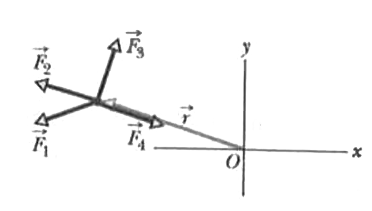 View Solution
View Solution
Knowledge Check
- Question 1 - Select One
The figure shows four arrangement of three particles of equal masses. Rank the arrangement according to the magnitude of the net gravitational force on the particle m, greatest first.
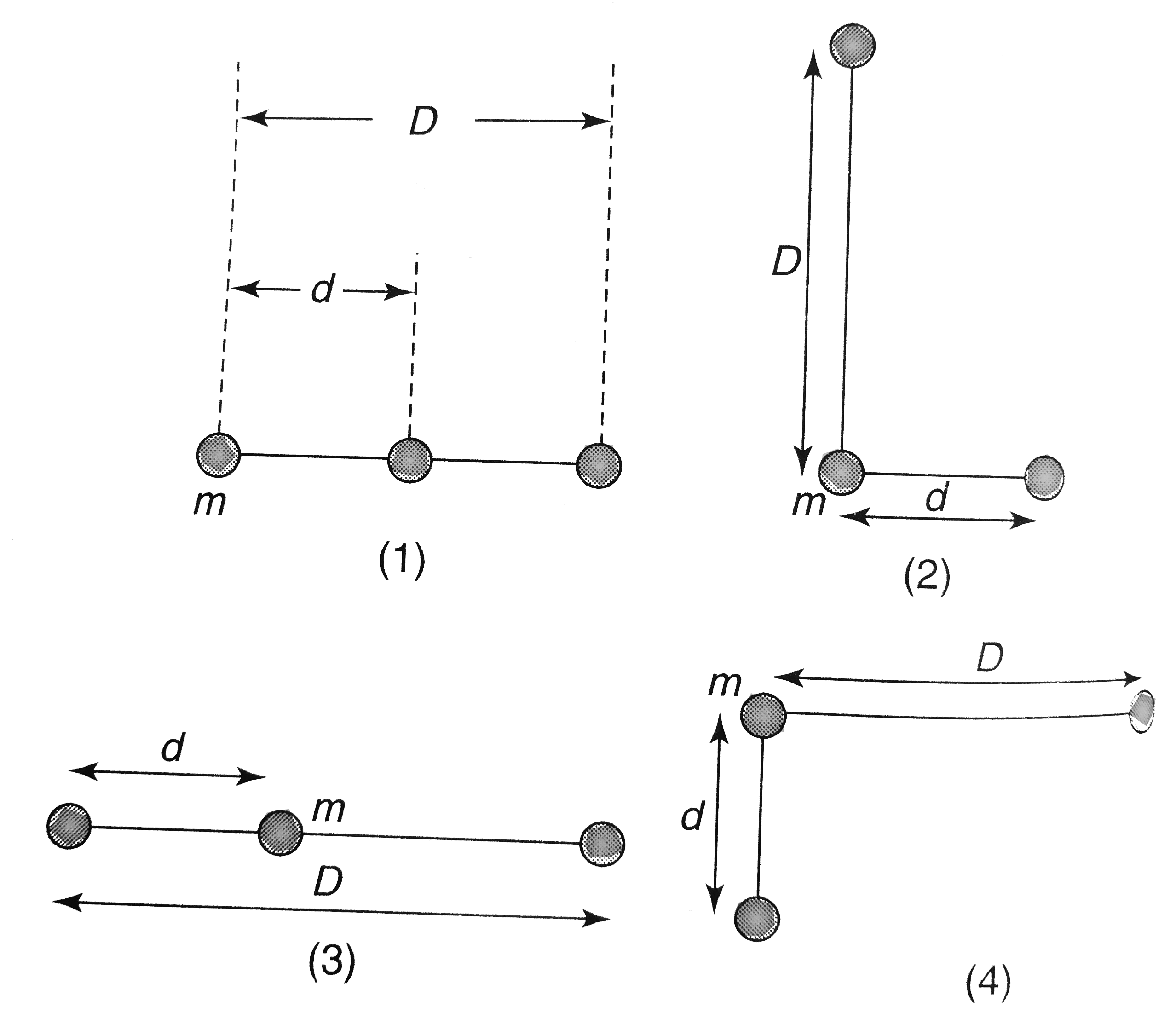 A1, tie of 2 and 4, then 3B1,4,3,2C2,3,4,1D4,3,1,2
A1, tie of 2 and 4, then 3B1,4,3,2C2,3,4,1D4,3,1,2 - Question 2 - Select One
Figure shown four solid spheres, each with charge Q uniformly distributed through its volume. The figure also shows a point P for each sphere. All at the same distance from the centre of the sphere. Rank the spheres according to the magnitude of the electric field they produce at point P.
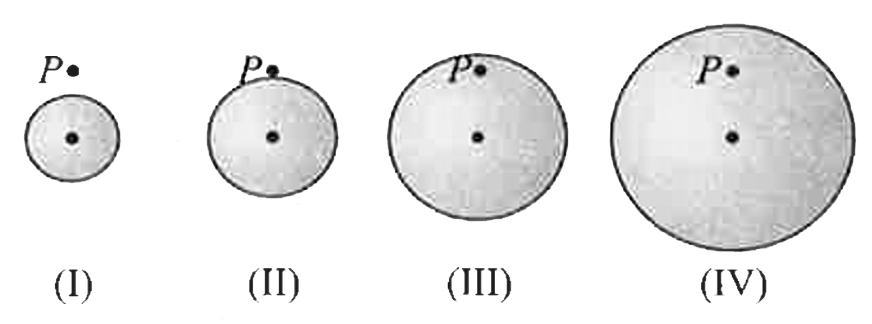 AIandII tie →III→IVBII→III→IVCIII→II→I→IVDall tie
AIandII tie →III→IVBII→III→IVCIII→II→I→IVDall tie - Question 3 - Select One
The figure shows four wire loops, with edge length of either L or 2L. All four loops will move through a region of uniform magnetic field →B (directed out of the page) at the same constant velocity . Rank the four loops according to the maximum magnitude of the e.m.f. induced as they move through the field, greatest first
 A(ec=ed)<(ea=eb)B(ec=ed)>(ea=eb)Cec>ed>eb>eaDec<ed<eb<ea
A(ec=ed)<(ea=eb)B(ec=ed)>(ea=eb)Cec>ed>eb>eaDec<ed<eb<ea
In part a of the figure, particles 1 and 2 move around point O in circles with radii 2 m and 4 m. In part b, particles 3 and 4 travel along straight lines at perpendicular distances of 4 m and 2 m from point O. Particle 5 moves directly away from O. All five particles have the same mass and the same constant speed. (a) Rank the particles according to the magnitudes of their angular momentum about point O, greatest first. (b) Which particles have neagtive angular momentum about point O?
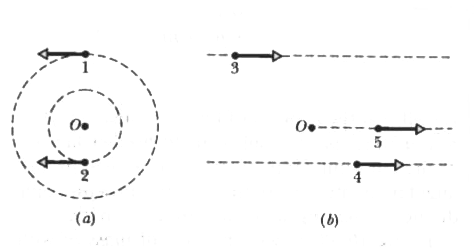 View Solution
View SolutionIn fig. a plastic rod in the form of circular are with charge +Q unformly distributed on it produces an electric fieldof magnitude E at the centre of curvature (at the origin). In fig., more circular rods with identical umform charges +Q are addes until the circle is complete. A fifth arrangement (which would be labeled e) is like taht in d except that the roed in the fourth quadrant has charge-Q. Rank all the five arrangements according to the magnitudes of the electric field at the center of curvature, greatest first.
 View Solution
View SolutionFigure 8-3 shows four situations in which the same box is pulled by an appiled force →F up a frictionless ramp through (and then past ) the same vertical distance In each situation, The force has a magnitude of 10 N. In situations (b) and (d), the force is directed along the plane: in situations (a) and (c). it is directed at an angle ϕ=37∘ to the plane. as shown. Rank the situations according to the work done on the box in the vertical distance by the appiled force. Also, discuss whether answer depends on the initial speed of box or the presence of other forces.
View SolutionFigure 5-44 shows an overhead view of a 0.0250 kg lemon half and two of the three horizontal forces that act on it as it is on a fric tionless table. Force →F1 has a magnitude of 6.00 N and is at θ1=30.0∘. Force →F2 has a magnitude of 7.00 N and is at
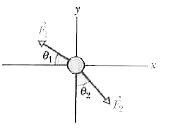
θ2=30.0∘. In unit-vector notation, what is the third force if the lemon half (a) is stationary, (b) has the constant velocity →v=(13.0ˆi−14.0ˆj) m/s, and ( c ) has the varying velocity ¯v=(13.0tˆi−14.0tˆj) m/s2, where t is time?View SolutionA rigid rod of length 2L is acted upon by some forces. All forces labelled F have the same magnitude. Which cases have a non-zero net torque acting on the rod about its centre ?
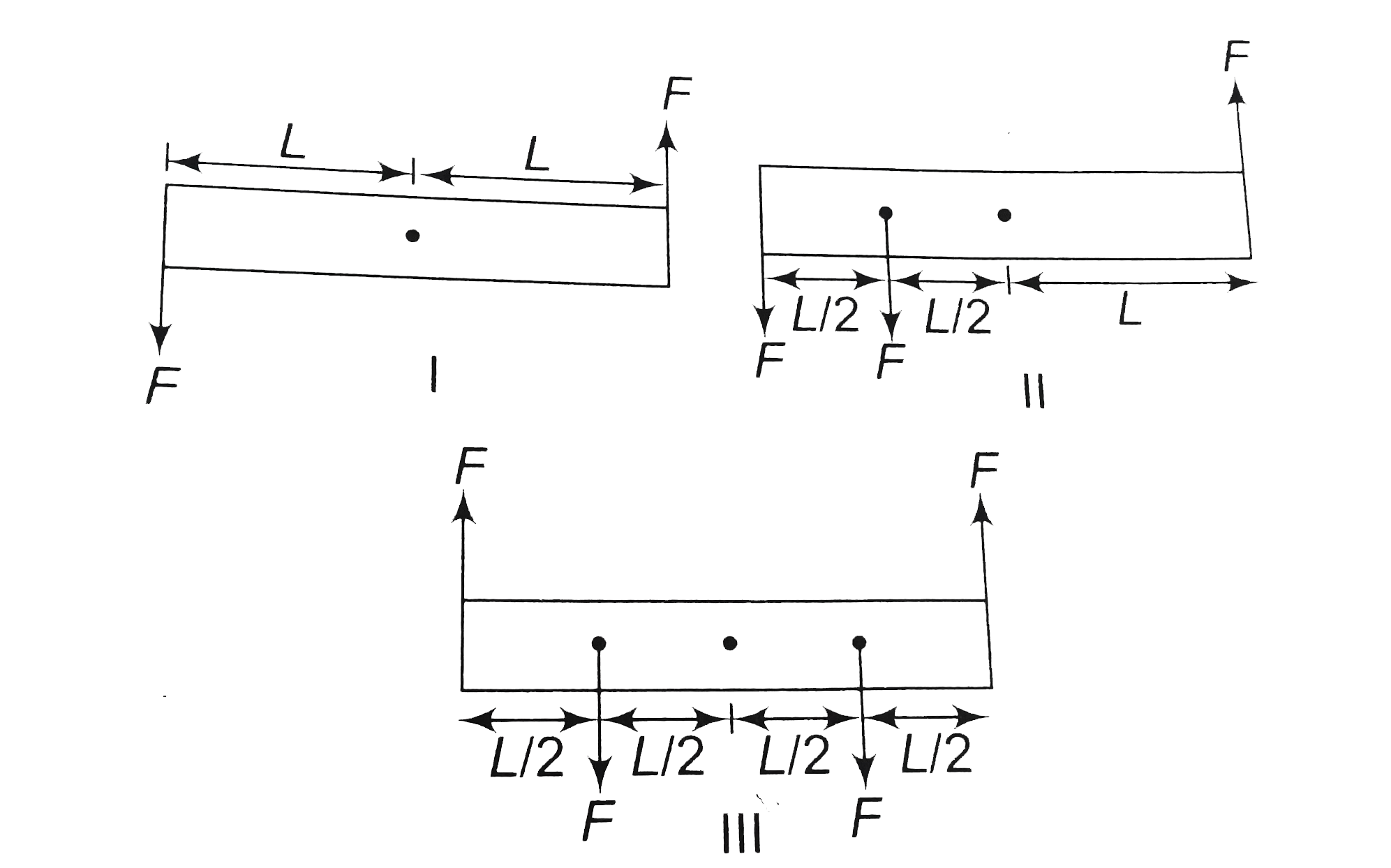 .View Solution
.View Solution

